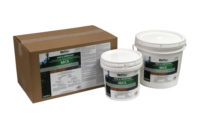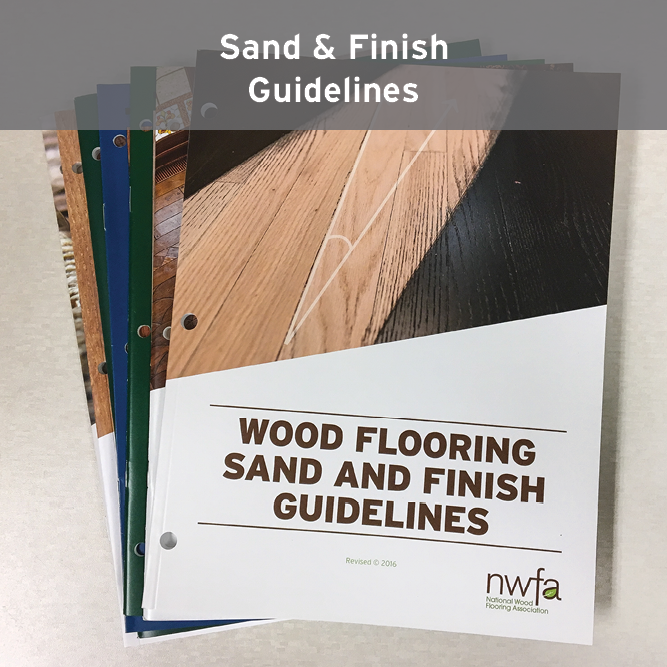Why Moisture Control is so Critical










Failures can present themselves almost immediately upon installation or can rear their ugly heads several years after the flooring has been installed and the building occupied. There is little doubt moisture control related issues are one of the most important design, construction and installation considerations for flooring covering applications.
This article will examine some of the steps that can be taken to prevent potential problems as well as troubleshoot and resolve existing problems.
Preventing Failures
Perhaps the best design element that will help prevent moisture related problems is to include a vapor retarder membrane—with a minimum thickness of .25mm—that is in contact with the underside of the concrete slab which conforms to ASTM E 1745: Specification for Plastic Water Vapor Retarders Used in Contact with Soil or Granular Fill under Concrete Slabs.
Placement of this vapor retarder is key to the success. For decades, arguments have been made as to where this vapor retarder should be placed under a concrete slab. However, it has become clear, when moisture sensitive floor coverings are being installed the vapor retarder membrane must be placed directly under the concrete slab.
Care needs to be exercised by the concrete installers to not tear or otherwise compromise this membrane. Studies have shown if the vapor retarder membrane is not placed in this location—and placed under the aggregate blotter layer for example—the levels of moisture within the concrete slab will actually increase over time.
With concrete finishing, the use of curing compounds is also critical to the performance of the floor covering. Curing the concrete so as to minimize or even eliminate potential bond breakers is also a key design element. Moderate to moderate-low water-to-cement ratios ranging from .40 to .45 typically result in slabs that are easily placed, finished and dried. Concrete mixtures that have higher water-to-cement ratios take much more time to dry out and can lead to moisture related failures.
Many floor covering finish manufacturers prohibit the use of film forming curing compounds as their use can create adhesion problems. They can also increase the amount of time for the concrete to dry while creating a potential bond-breaking environment.
Coordination between the floor covering manufacturer, the adhesive maker and the curing compound manufacturer should be mandatory to ensure all these elements are compatible.
Other things to consider include the alkalinity of the concrete and its potential effect of the flooring finish and more than likely the adhesive used for the floor covering. Most floor covering and adhesive manufacturers prefer a concrete’s pH be under 10. If the floor covering manufacturer requires mechanical scarification of the slab, this can actually increase the pH of the concrete surface as the surface layer of concrete that has experienced carbonation is removed. In addition, the presence of efflorescence may indicate the concrete is emitting a fair rate of moisture. Both conditions may require additional attention in preparing the concrete to receive the flooring finish.
The biggest thing working against these installations is time. Typically, a moderate to low concrete mix design will take three to four months to dry to achieve a moisture vapor emission rate of 3 lbs/1,000 ft2/24 hrs or less than 75% relative humidity (RH). Therefore, if at all possible, the construction schedules should accommodate this time.
As mentioned above, time is the factor that works against ideal concrete cure/drying periods as aggressive fast track construction schedules force work to occur in many environments. When this is the case, how is a concrete slab evaluated to determine its moisture rate emission and what can be done to control it so the floor covering finishes and adhesives can be utilized?
It is important to note the floor covering installer should conduct a primary analysis of the site conditions. However, if it appears that potential moisture related issues are present, an independent third-party professional analysis might be in order. It is not reasonable to expect floor contractors to be solely responsible for determining when/if a concrete slab is ready to receive the floor covering.
Floor covering installers should not be burdened with these evaluations because in many cases, the scope of troubleshooting a concrete slab—with all its characteristics, ever changing science and mix design technology—is more than likely beyond their expertise.
The industry has moved to utilizing in-situ RH testing which measures the moisture content in concrete slabs in RH percentage using in-situ probes in accordance with ASTM F2170.
Once a thorough evaluation (e.g. evaluate slab for vapor retarder membrane and its functionality, concrete mix design, cure of concrete, moisture conditions, surface pH, surface contaminants, recommended surface preparation, etc…) has been conducted and the information has been reviewed by all parties, a determination can then be made as to if/when the concrete will be ready for flooring installation.
Most moisture related flooring issues can be completely avoided by simply reviewing the moisture conditions as reported prior to flooring installation to confirm they are within the requirements of the flooring scheduled to be installed or the correct actions have been taken to mitigate any issues prior to installation.
It is important to understand moisture-testing results will show the conditions that exist during the testing period only. Concrete moisture conditions can and do change for a variety of reasons that are not within the control of the flooring contractor. It is possible moisture-testing results prior to flooring installation are within the floor covering manufacturer’s requirements then conditions change resulting in a failure. It is also possible testing is conducted but the installation is delayed and moisture conditions change during the delay period due to a weather event, construction spills, burst pipes, etc.
Once a concrete slab is evaluated and the moisture vapor emission rate is determined, the next steps more than likely will include the use of a moisture mitigation membrane designed to prevent the moisture from affecting the adhesive and floor covering finish.
The requirements contained in ASTM F 710: Standard Practice for Preparing Concrete Floors to Receive Resilient Flooring should also be consulted and adjustments made as required.
When moisture mitigation is required, consult the manufacturer of that product for the installation requirements, application techniques required to bring the concrete into conformance and for its warranty coverage. Most of these materials are two-part epoxy resin based, low VOC emitting materials. In many cases, the thickness of the application is varied depending on the rate of moisture emission. An applicator experienced in the use of these membranes should be utilized.
Recently a new standard, ASTM F3010: Standard Practice for Two-Component Resin Based Membrane-Forming Moisture Mitigation Systems for Use under Resilient Floor Coverings, has been developed for these types of products and has been widely accepted and specified in the industry—and for good reason.
Moisture mitigation products designed to meet strict performance criteria of ASTM F3010 have been proven to allow for successful installation of moisture sensitive flooring where concrete moisture conditions are at maximum levels.
Typical product characteristics include the ability to significantly bring down moisture emission rates from as high 25-lbs./1,000 ft2/24 hrs. per ASTM F1869 and 98% RH conditions per ASTM F2170. They can also be used on concrete slabs with pH levels typically as high 12 to 14. They can be applied over concrete slabs that are around a week old and they allow for the installation of vinyl, rubber, VCT, carpet, wood, ceramic tile, stone and other moisture sensitive floor coverings and adhesives.
Consult with the moisture mitigation manufacturer on the details of its warranty to ensure a complete understanding of the coverage is achieved. In many cases, the floor covering finishes and the labor to re-install any affected areas is included in the warranty coverage.
What if the installation is already done and the project is experiencing some of the problems mentioned at the outset? Moisture mitigation manufacturers and floor covering forensic experts can be brought in to properly investigate the root cause(s) of the moisture problem and to recommend a suitable remediation plan.
The plethora of functional floor covering finishes provides building owners and design professionals with many creative options. The design and construction of concrete slabs and controlling moisture vapor emissions are critical components to the long-term performance of these finishes.
Work with your installation materials manufacturers to review design and installation specifications to ensure moisture related flooring issues don’t keep you awake at night.
Arthur Mintie serves as the director of technical services at Laticrete International, a world leader in tile and stone installation systems and construction solutions. He is responsible for overseeing the operations of the company’s Technical Services Department, which provides technical assistance to specifiers and designers and is actively involved in global education and training for tile and construction industry materials and methods. For more information, contact him at (203) 393-0010 or amintie@laticrete.com.
Looking for a reprint of this article?
From high-res PDFs to custom plaques, order your copy today!













